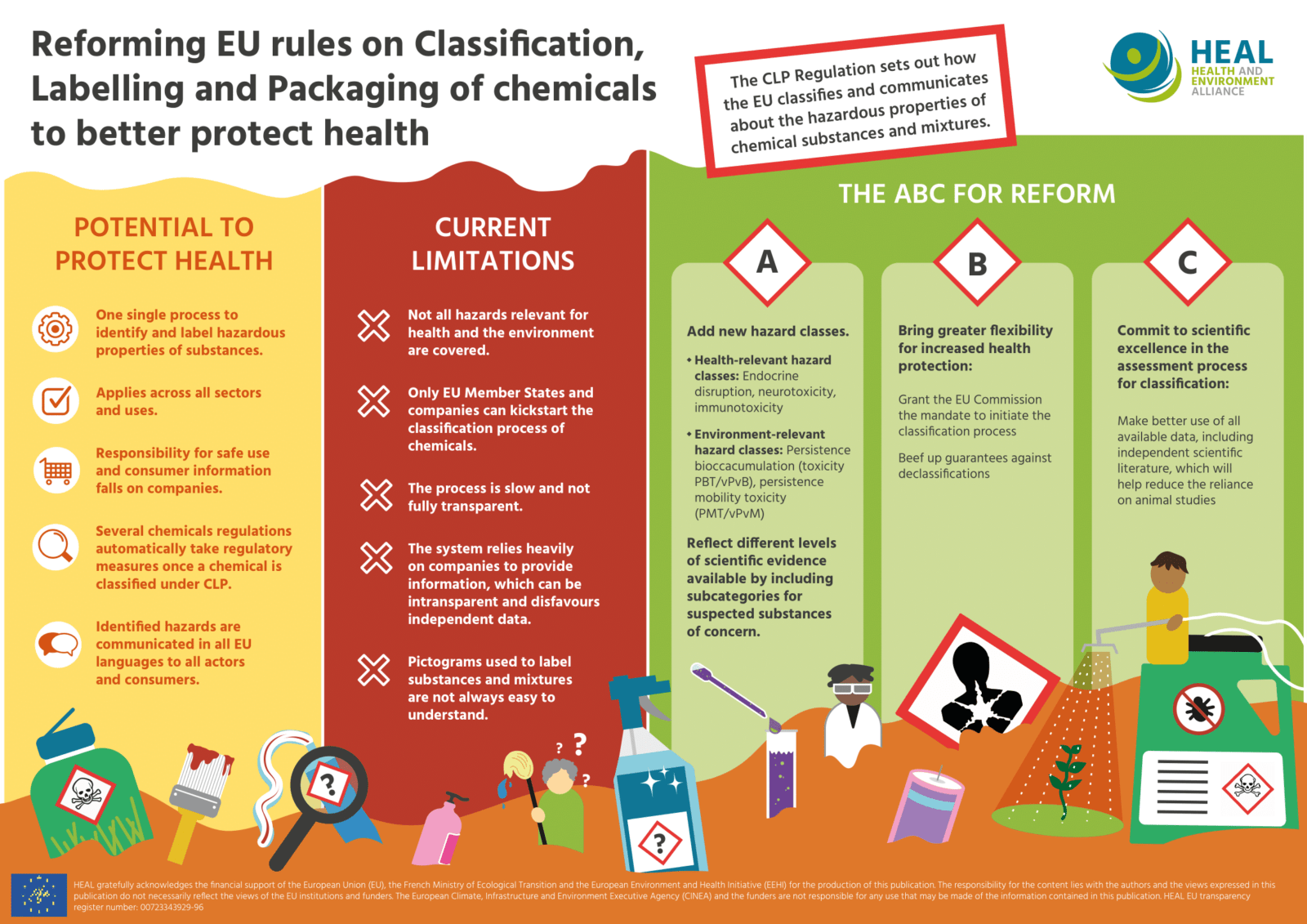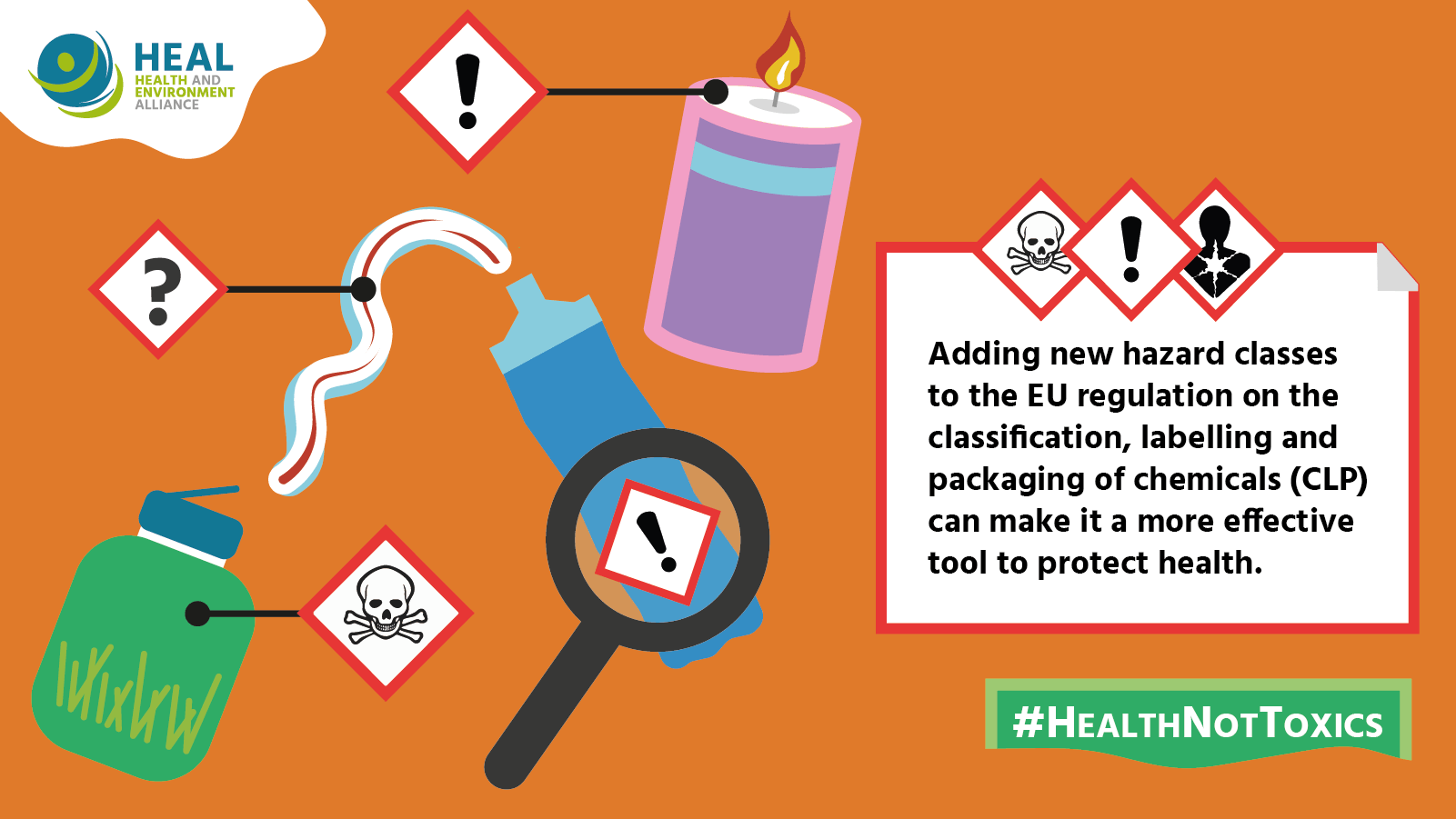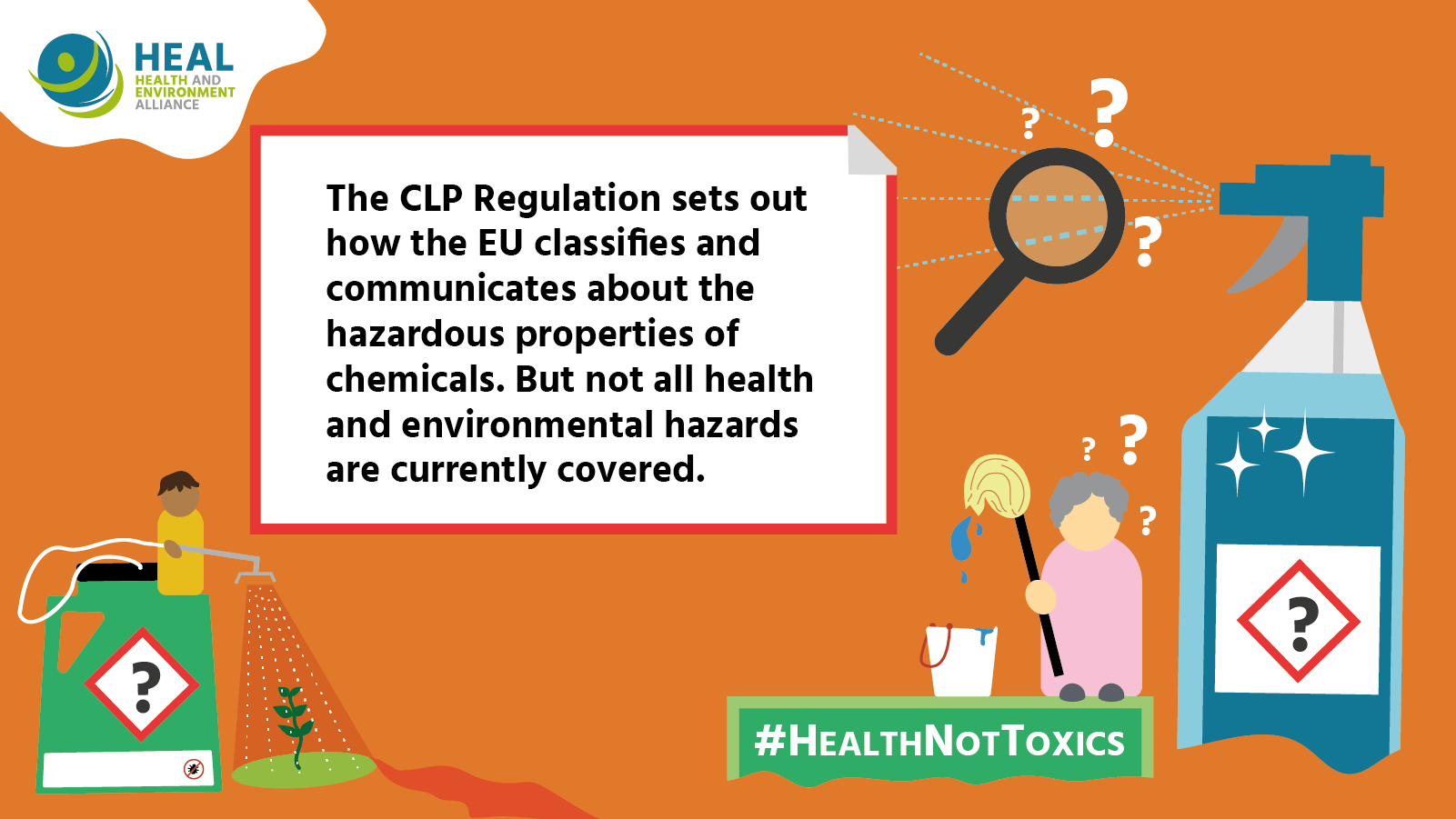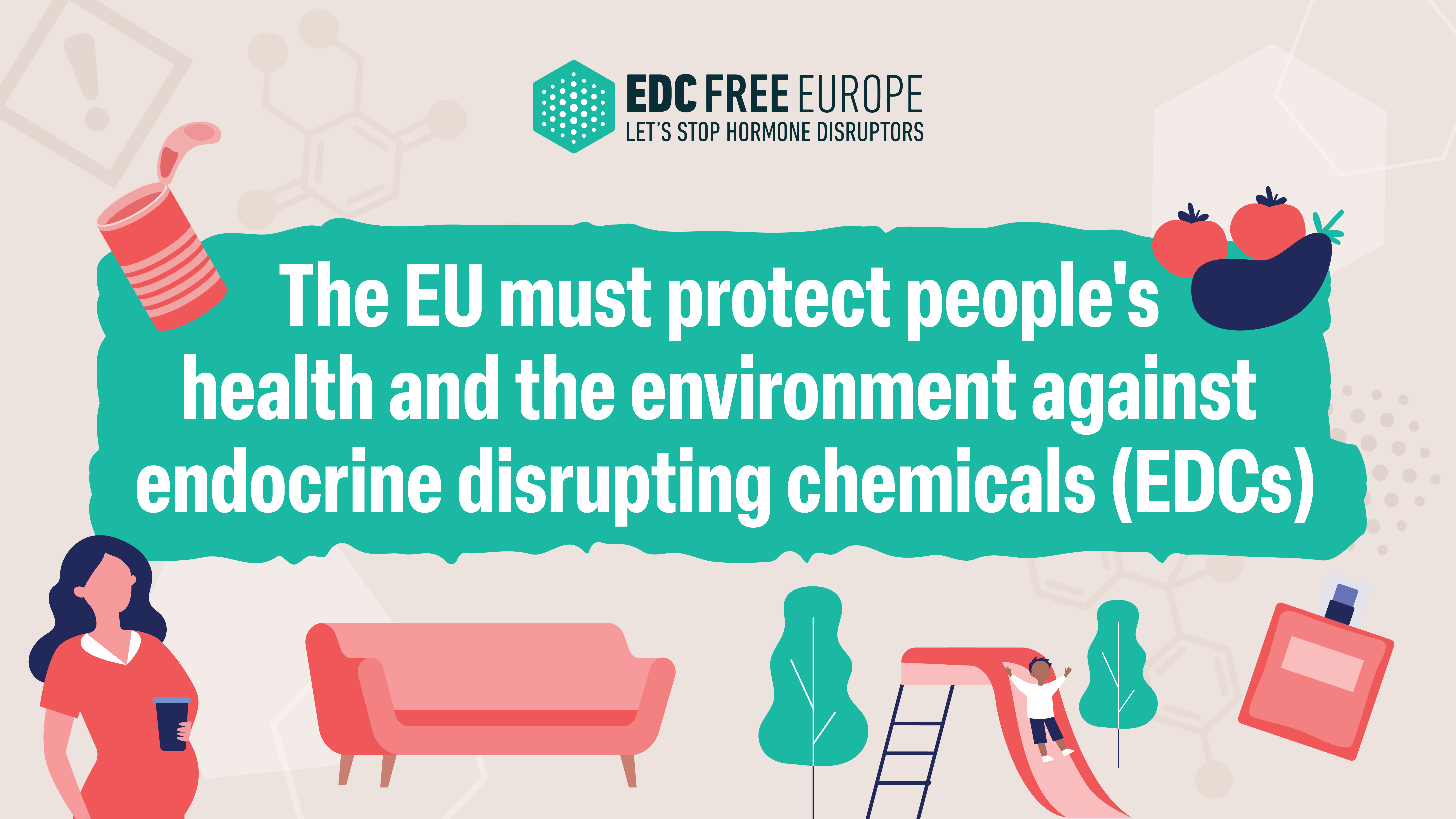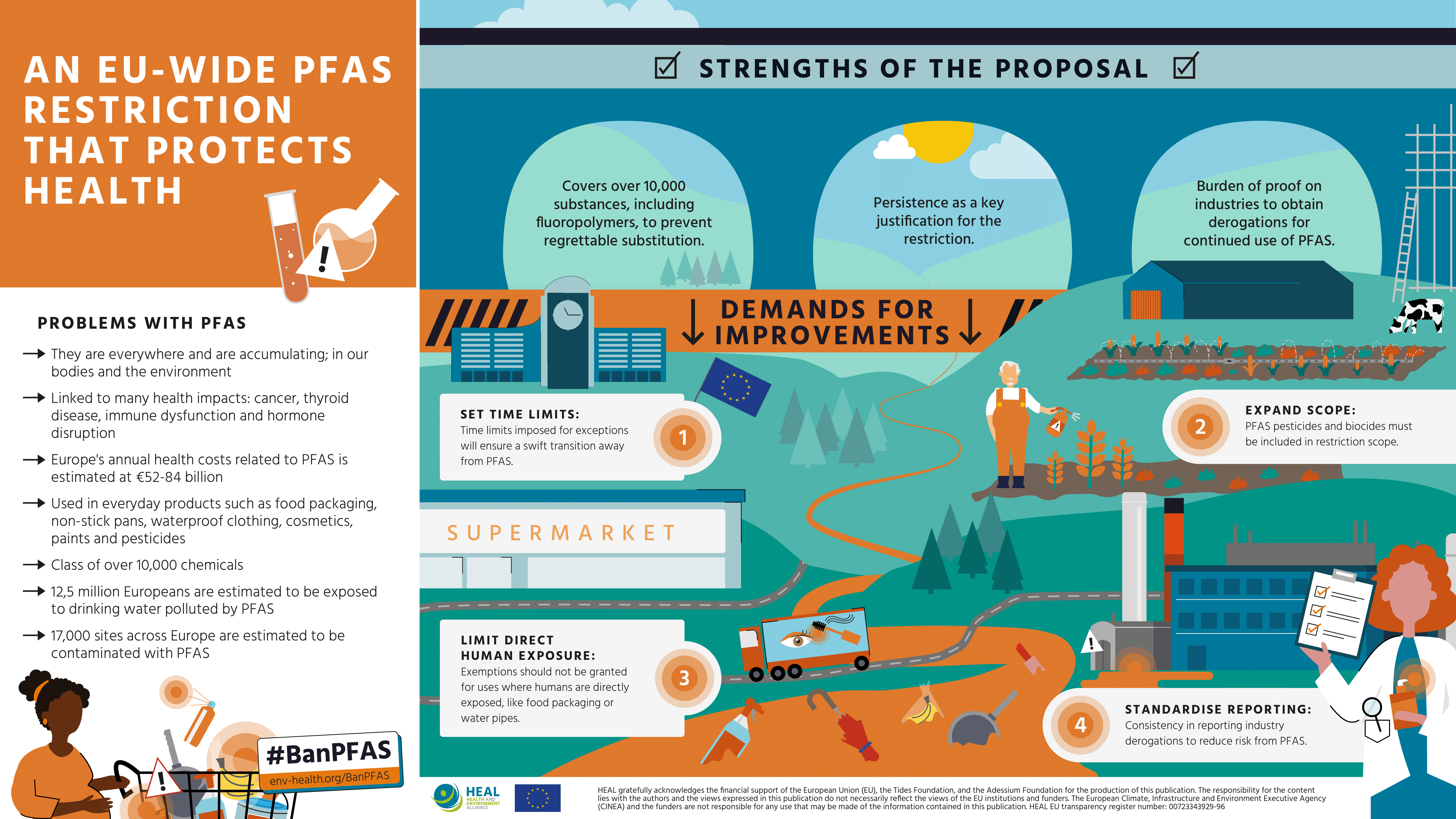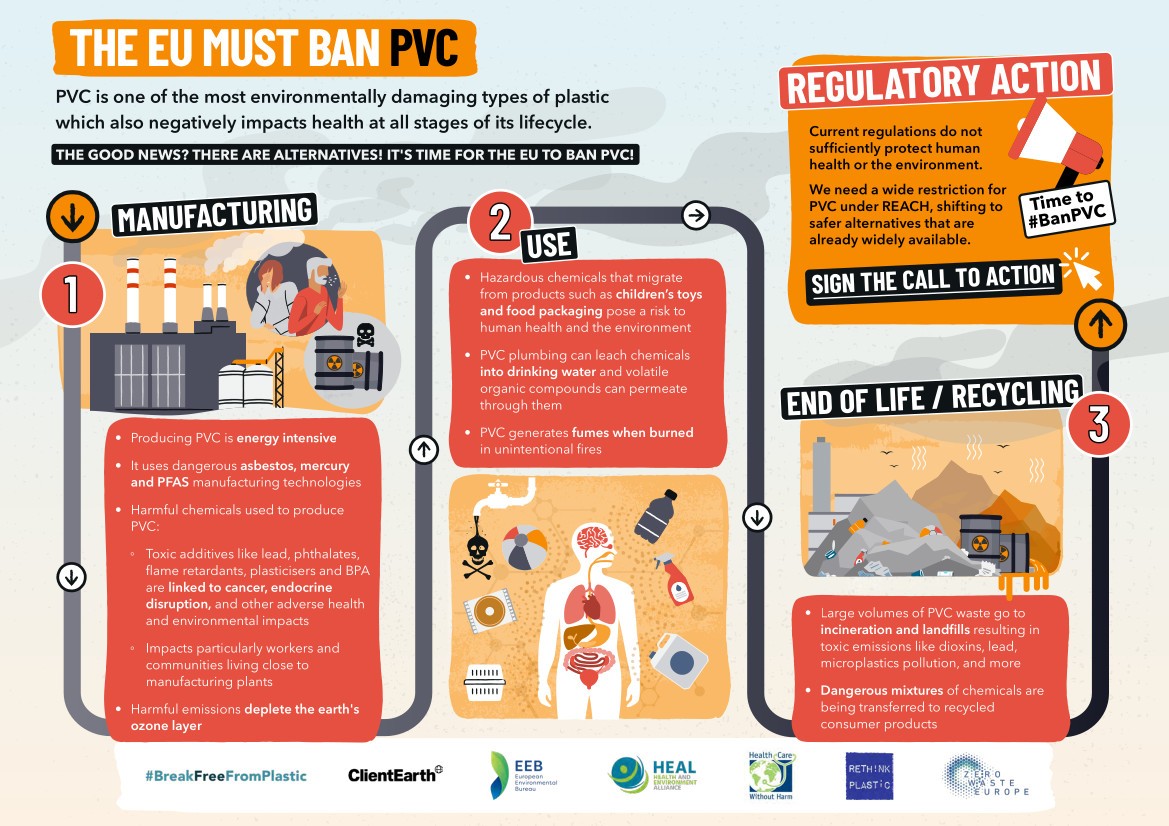The EDC-Free Europe coalition, of which HEAL is a member, has launched a new infographic illustrating the harmful impacts of exposure to known and suspected endocrine disruptors on our health and the environment.
What’s that warning symbol written on the label of your bathroom cleaner, dishwasher detergent, tin of paint or scented candle? The Classification, Labelling and Packaging (CLP) Regulation sets out how the EU classifies and communicates about the hazardous properties of chemical substances and mixtures. To help you understand exactly what this juggernaut of EU chemicals legislation covers and why the upcoming revision of the CLP can be a health promotion opportunity, the Health and Environment Alliance (HEAL) has launched an easy-to-use infographic.
Open any cupboard in your home: how many items with a hazard warning symbol can you count? Many of us are familiar with at least some of these symbols, but few may fully understand them. Even fewer people have basic knowledge about the process for how the European Union decides which chemical substances and mixtures should be assigned a particular hazard and how it should be labelled for it.
Introduced in 2008, the CLP Regulation has created a single harmonized process to identify and label the hazardous properties of chemical substances and mixtures. It applies across all sectors and uses, and identified hazards are communicated in all EU languages to all actors and consumers.
The CLP Regulation is an important cornerstone of EU chemicals legislation in part because several sectoral chemicals regulations automatically take regulatory measures once a substance is classified under CLP. It is therefore very important that chemicals that are hazardous to human health and the environment are properly identified through CLP and that this classification can feed into other chemical legislations, which can then trigger adequate measures to restrict the use(s) of chemicals of concern.
However, in its current form CLP has several important limitations. To start with, only EU Member States and companies can kickstart the classification process of chemicals. This process is often slow and not fully transparent. What’s more, the system relies heavily on companies to provide information and often disfavours independent data.
In our view, one of the main weaknesses of CLP is that it currently does not cover all relevant health and environmental hazards. While it includes hazard classes for important health endpoints such as carcinogenicity, mutagenicity, or toxicity to reproduction, endpoints such as endocrine disruption, neurotoxicity or immunotoxicity are not covered. Important environmental hazard classes are also missing, for instance for persistence, bioaccumulation and toxicity (PBT/vPvB) and persistence, mobility toxicity (PMT/vPvM).
The 2020 Chemicals Strategy for Sustainability committed to fixing these flaws by revising the CLP legislation and introducing new hazard classes, starting with classes for endocrine disruption, as well as classes for persistent, bioaccumulative and toxic properties (PBT/vPvB properties) and for persistent, mobile and toxic properties (PMT/vPvM properties). HEAL strongly supports such additions as one important way to make CLP a more effective tool to protect health.
Download our social media assets:

